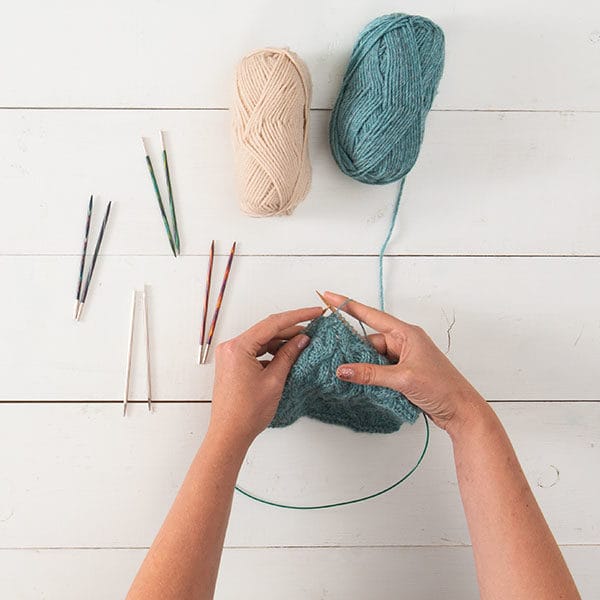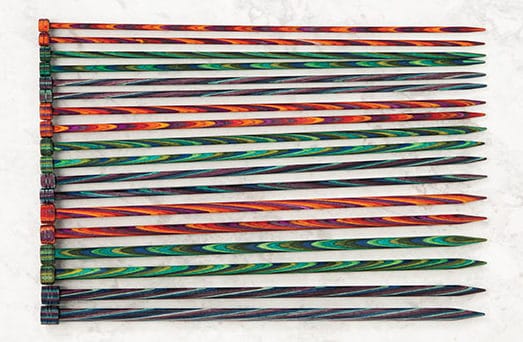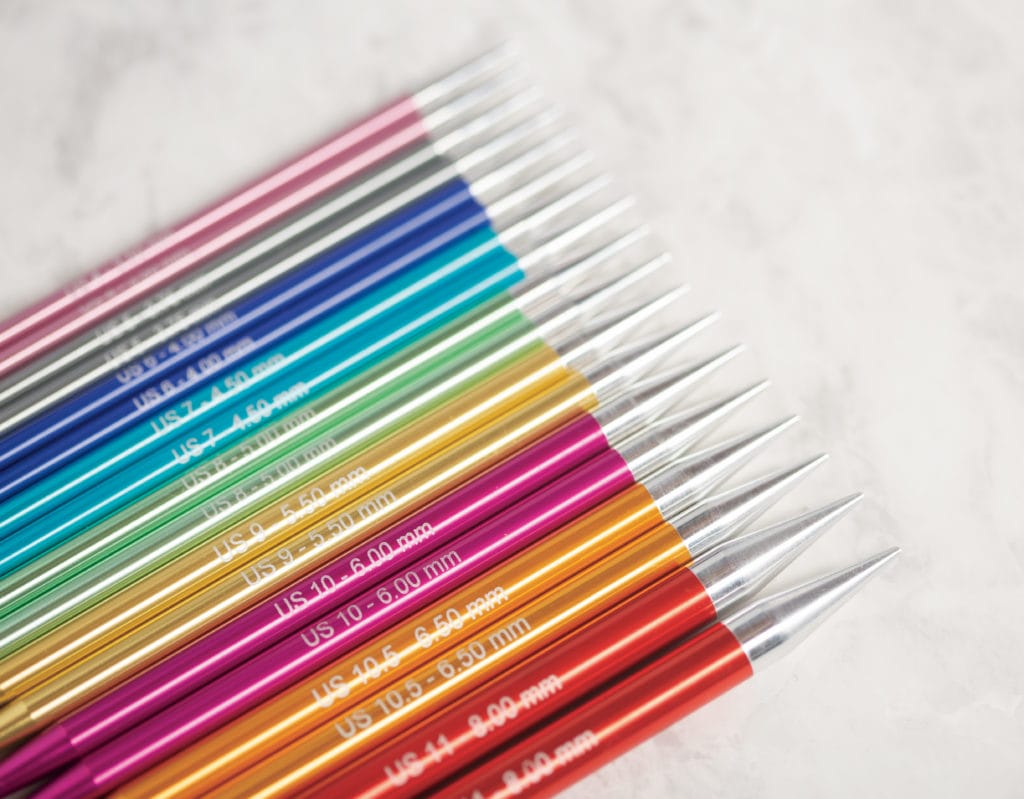
For knitters, needles are every bit as important as the yarn in a project—you’re holding them for thousands of stitches, so they better be comfortable! There are so many types of materials for knitting needles; it’s enough to make a new knitter’s head spin. What is the best for one knitter might be a nightmare for another! Today we’re going to break down the top materials of knitting needles to assist you in that all-important decision.
Plastic
A significant number of knitters begin their knitting journey with plastic needles, and it’s not hard to see why. They are widely available and extremely inexpensive, and many new knitters’ first pair may be ones their parents or grandparents used! They are lightweight and very flexible; though the downside is they are very prone to bending and even breaking in smaller sizes. The smoothness of these needles also varies, but they tend to be stickier and the yarn doesn’t slide as effortlessly as on other needle materials.
Wood

Wood needles were most likely the earliest knitting needles and can be made of almost any hardwood such as birch, oak, bamboo, rosewood, or even ebony. They are lightweight and feel warm in the hands as you use them. Many knitters find them easier on the hands than plastic or metal, due to a slight flex, though they are not as bendy as plastic needles.
Some wooden needles are made up of layers of laminated wood, such as our Caspian, Radiant, Sunstruck, and Majestic needles. This process creates a strong and smooth needle, which means yarn glides easily when working with them, though with some light friction, which isn’t a bad thing when using slippery yarns such as silk—you don’t want them to just slide off your needle as you are knitting!

Other needles, such as our Cocobolo set, are made up of a solid piece of wood. These tend to be slightly heavier than the layered needles as well as slicker for fast knitting.
One downside to wood needles is they can break if handled too roughly—or when our favorite animal companions find them a wonderful toy to chew on!
Metal
Metal needles are the strongest of the knitting needle materials as well as the slickest. They are usually heavier than plastic or wood but with sharper points, making them fantastic needles for lace and cable knitting, where stitches are constantly being manipulated. Plus, you also get that lovely click-clack noise when using them!

Materials vary for metal needles, including nickel, brass, and aluminum. Our Nickel Plated needles have dedicated fans, due to the super slick surface for speedy knitting. Textured yarns or “stickier” yarns slide easily over the needle, so it’s a great choice for knitting with wool. A downside is metal needles can be cold and inflexible, so those with Arthritis or Carpal Tunnel Syndrome may find them uncomfortable to use for long periods of time. Also, nickel can be a common allergy for folks so these needles are best avoided them.

Aluminum needles, such as our Prism needles, are lighter than nickel, with similar sharp points. These needles warm in your hands as you use them, and they are great for wood needle fans who find working with a grabbier yarn is slowing them down too much.
Stainless steel needles are also popular due to the frequency of nickel allergies. Our Reflections needles are slick and light thanks to their hollow 100% stainless steel tips, combining the best features of our Prism and Nickel Plated needles. The strength of stainless steel also allows for finer gauge interchangeable needles to be able to hold up to long term use, so our Lace IC set that features needle tips as small as US 0 (2.00 mm) is available exclusively in stainless steel.
While there are many other types of knitting needle materials out there, such as glass, casein, and even ivory, these 3 are the most common and all have ardent fans—for a lively conversation, go to a knitting night and ask the group: “wood or metal?” Finding the perfect needle may take some experimenting, but it’s worth it when you do!



